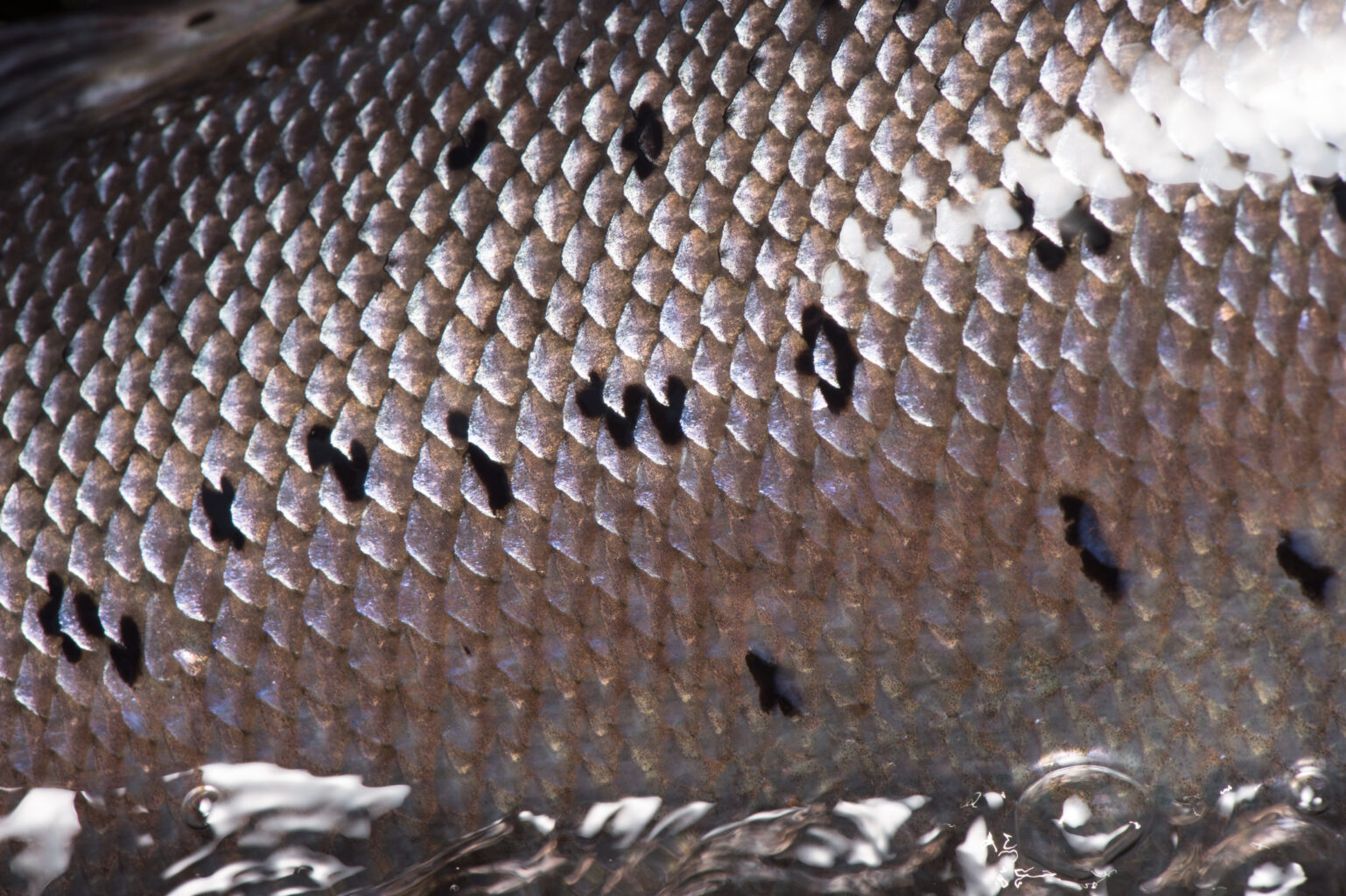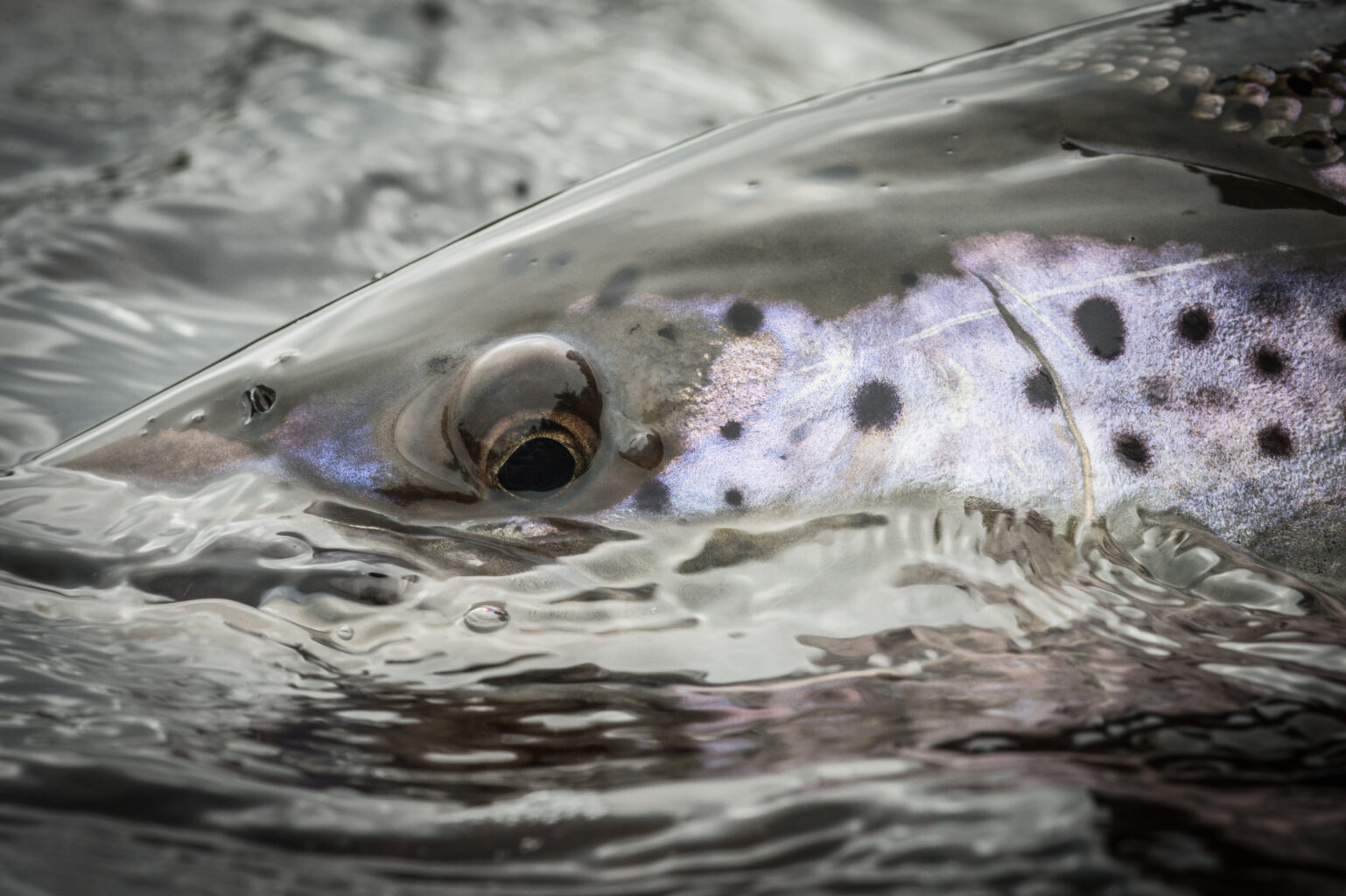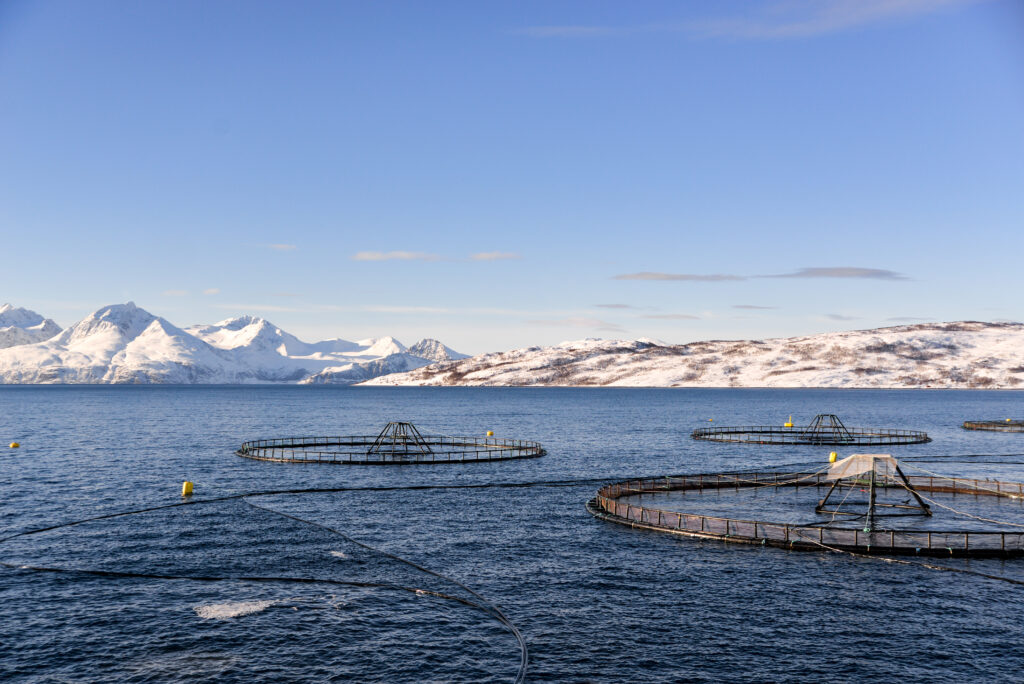Aquaculture and Related Activities
Aquaculture, Introductions and Transfers
Salmon aquaculture includes farming, ranching and stocking activities. Salmon farming is a dynamic industry that has increased dramatically since NASCO’s establishment. Salmon ranching is currently only conducted at an experimental scale in the North Atlantic. Stocking of salmon is conducted for a variety of reasons including restoration, rehabilitation, mitigation and enhancement. The rearing of transgenic salmon (i.e. salmon that have been modified by genetic engineering to contain DNA from an external source) is currently on an experimental scale in secure land-based facilities. There are concerns about the impacts of salmon farming, poorly planned introductions and transfers, and stocking practices on the wild stocks. The graph below shows worldwide production of farmed Atlantic salmon, 1980 to 2019. In 2019, production of farmed salmon in the North Atlantic area alone was a little over two thousand times the harvest of wild Atlantic salmon.

NASCO’s goal is to minimise the possible adverse impacts of aquaculture, introductions and transfers and transgenics on the wild stocks of Atlantic salmon, working with industry stakeholders where appropriate. The key issues include:
- minimising the escape of farmed salmon to a level that is as close as practicable to zero;
- minimising any negative impacts of ranched salmon by utilising, as far as possible, local stocks and developing and applying appropriate release and harvest strategies;
- minimising the adverse genetic and other biological interactions from salmon enhancement activities including introductions and transfers; and
- minimising the risk of transmission to wild salmon stocks of diseases and parasites from all aquaculture activities and from introductions and transfers.
NASCO’s ‘Williamsburg Resolution’ is designed to minimise impacts of aquaculture, introductions and transfers and transgenics on the wild stocks. In 2024 NASCO agreed the document ‘Guidelines for Stocking Atlantic Salmon’, CNL(24)61, as an update to Annex 4 of the Williamsburg Resolution, which provides guidance to NASCO’s Parties on applying the Precautionary Approach to the authorisation and conduct of any stocking of Atlantic salmon into the wild.



While salmon aquaculture has resulted in an abundance of salmon on supermarket shelves, it has not come without cost to wild populations. One impact of salmon farming is that it increases the abundance of sea lice in the marine environment, to the extent that it has a negative impact on wild salmon populations. And timing can be everything, with salmon particularly vulnerable when they first leave their home rivers and head to sea. In an already challenging marine environment, the additional burden of a sea-lice infestation can reduce the chances of survival greatly.
It is also recognised that large numbers of domesticated salmon escape from fish farms each year, with escapees observed in rivers in all regions where salmon farming occurs. For wild salmon, this causes increased competition for resources and may result in a wild fish spawning with a farmed one, compromising the genetic ‘fitness’ of wild populations. The latter is important because salmon populations need good genetic diversity to ensure that they are as resilient as possible to any future pressures they may experience.
Careful siting of fish farms away from wild salmon migration routes, state-of-the-art containment at sea, use of sterile fish, sea lice and disease management systems can all help mitigate any negative impacts. A further option is the development of closed-containment salmon production systems at sea or on land as an alternative method of fish farming. Such a system of aquaculture would give fish farmers complete control of the rearing environment and minimise the environmental impact of their activities on wild fish.

NASCO / North Atlantic Salmon Farming Industry Liaison Group
NASCO established a Liaison Group to provide an international forum for liaison between the salmon farming industry in the North Atlantic (the International Salmon Farmers Association – ISFA), and the relevant authorities responsible for wild Atlantic salmon and aquaculture on issues of mutual interest and to make recommendations for action. The Group met from 2000 to 2011 and, among other things, developed Guidelines on the Containment of Farmed Salmon (in 2001); held a one-day workshop in 2005 entitled ‘Wild and Farmed Salmon – Working Together’; and developed ‘Guidance on Best Management Practices to Address Impacts of Sea Lice and Escaped Farmed Salmon on Wild Salmon Stocks’ together with an explanation of the terms used in the BMP Guidance.
The international goals of this BMP Guidance are:
- 100% of farms to have effective sea lice management such that there is no increase in sea lice loads or lice-induced mortality of wild salmonids attributable to the farms; and
- 100% farmed fish to be retained in all production facilities.
In 2013, the Council decided that the regular meetings of the Liaison Group would not be continued, but, if a specific need arose, consideration could be given to convening a joint ad hoc group. It agreed to retain an agenda item entitled ‘Liaison with the Salmon Farming Industry’, during which the International Salmon Farmers’ Association (ISFA) could be invited to participate in an exchange of information on issues concerning impacts of aquaculture on wild salmon.
Introductions and Transfers
There are risks associated with movements of salmonids. These risks have been highlighted by the spread of the parasite Gyrodactylus salaris which has caused very serious problems in some parts of the North-East Atlantic Commission area following its inadvertent introduction from the Baltic Sea.
Resolutions, Agreements & Guidelines
- Guidelines for Stocking Atlantic Salmon (CNL(24)61)
- ‘Guidance on Best Management Practices to Address Impacts of Sea Lice and Escaped Farmed Salmon on Wild Salmon Stocks‘ (SLG(09)5))
- ‘Williamsburg Resolution’ (CNL(06)48)
- ‘Williamsburg Resolution‘ (Russian Translation)
- Guidelines on Containment of Farm Salmon (CNL(01)53)
Progress in implementing these Resolutions, Agreements and Guidelines is assessed through the review of Implementation Plans and Annual Progress Reports.
Publications
- NASCO. 2016. Report of the 2016 Theme-based Special Session: Addressing impacts of salmon farming on wild Atlantic salmon: Challenges to, and developments supporting, achievement of NASCO’s international goals (CNL(16)60)
- ICES. 2016. Report of the Workshop to address the NASCO request for advice on possible effects of salmonid aquaculture on wild Atlantic salmon populations in the North Atlantic (WKCULEF), 1–3 March 2016, Charlottenlund, Denmark. ICES CM 2016/ACOM:42. 44 pp.
- Hansen, L.P. and Windsor, M. 2006. Interactions between aquaculture and wild stocks of Atlantic salmon and other diadromous fish species: science and management, challenges and solutions. Bergen, Norway, October 2005. NINA Special Report 34. Trondheim, Norway. 2006. 74 pp.
- NASCO / ISFA. 2005. Report of a one-day workshop organised by the NASCO/North Atlantic salmon farming industry Liaison Group: Wild and Farmed Salmon – Working Together.
- Youngson, A.F., Hansen, L.P. and Windsor, M.L. 1998. Interactions between Salmon Culture and Wild Stocks of Atlantic Salmon: the Scientific and Management Issues. Bath, England, U.K., April 1997. Norwegian Institute for Nature Research, Trondheim, Norway. 142 pp.
